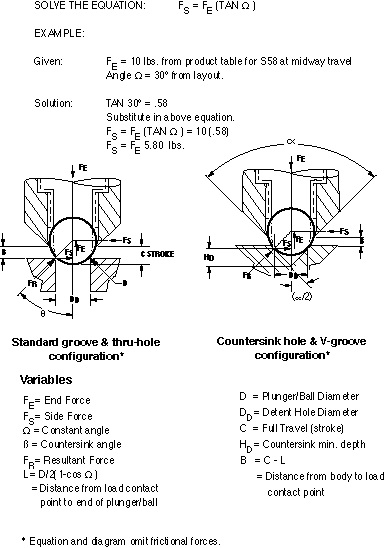Should I use a low, normal or heavy duty end force for my vlier plunger?
- English
- Français
- Nederlands
- Español
- Deutsch
- Português
We can give you recomendation about the correct vlier plunger, but need your help:
1) side load
a nose plunger is not recommended for side loads but this also depends on the application and the load it has to carry. Is it a direct side load or in an angle? When side loads, please consider ball plungers.
2) the application
When selecting the correct part a lot depends on the application and usage (indexing, positioning, fastening, disconnecting, releasing). What is the load will it have to withstand will it be moved by hand or by machine is it carrying any weight? Also its important to take the detent in to account and the enviroment, temperature, corroding environment etc.
Detent:
Detents used with spring-loaded devices ensure proper engagement and disengagement of mating parts at a predetermined position and force. Proper detent design is critical for successful use of plungers. Improperly designed detents can cause excessive wear on nylon or Delrin plunger tips, potentially decreasing positioning accuracy and adversely affecting plunger holding capacity. As a general rule, the smaller the contact angle of the detent the easier the plunger will kick-out of it and the longer a nylon or delrin plunger tip will last.
Detent Design Guidelines
Select the contact angle which provides the desired relationship between plunger side (disengagement) force and end force.

vlier detent design guideline

